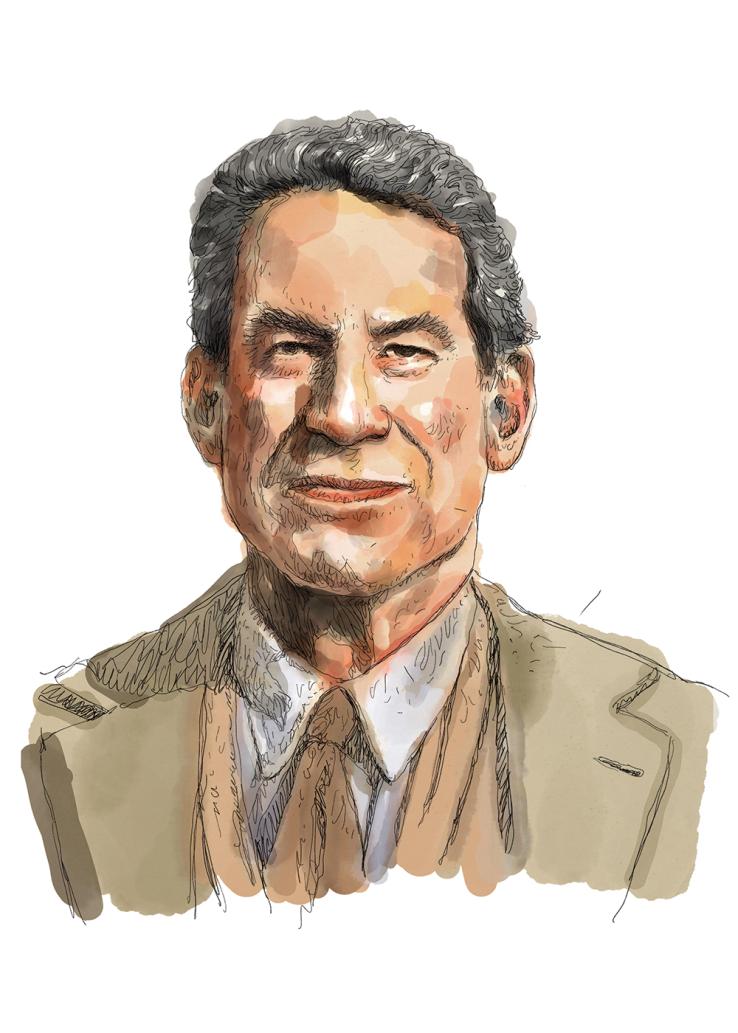For decades, Edoardo Almagià ’73 sought the remnants of ancient civilizations. A love of antiquities that started in his childhood grew into a career, with Almagià acquiring mostly small objects from more than 2,000 years ago.
From dealers, restorers, and collectors in Europe, he obtained pottery with red-figure and black-figure paintings depicting scenes and myths. He procured marbles of Aphrodite’s torso and a child’s sarcophagus. He gathered terra cotta objects, including one of a galloping centaur.
Far from great masterpieces, the items represented the everyday of antiquity. They were often purchased, Almagià says, in open markets, a common practice when he started as an art dealer in the 1980s. Where they came from and how they got there, Almagià says he didn’t ask.
“Do you think I was the only one buying from the free port?” he tells PAW. “Everybody was doing it.”
From his base in New York, Almagià found eager buyers. In receptions at Christie’s and Sotheby’s auction houses, he met collectors and museum curators who would purchase the antiquities for a few hundred or few thousand dollars. His network grew and eventually antiquities sold, loaned, or donated by Almagià appeared in museums across the United States.
Now, though, hundreds of his items have been returned to Italy and Almagià is the target of an ongoing investigation. The Manhattan district attorney’s office, working with the Italian government, has executed search warrants across the United States over the past two years in the homes of private collectors, in galleries, and in museums, including the Princeton University Art Museum (PUAM).
Led by Assistant District Attorney Matthew Bogdanos, who heads the Antiquities Trafficking Unit, the office has repatriated more than 200 Almagià antiquities to Italian law enforcement. They’re valued at nearly $7 million.
“If Almagià is the first name on your provenance, it is stolen,” Bogdanos tells PAW. “That is well known. …
“This guy got away with it for so long, and anyone who has any respect for the rule of law has got to say, ‘Enough.’”
Almagià joins a growing list of dealers whose objects acquired years ago are being repatriated to their modern countries of origin. Under a 1909 Italian law, antiquities are the cultural property of the state, making items excavated illegally or exported without documentation stolen goods. In court records and an interview, Bogdanos alleges that Almagià worked with tombaroli, or tomb raiders, who looted the items from archaeological sites in Italy before falsifying documents to export them. Almagià’s own “meticulous” records seized by U.S. law enforcement in 2006 serve as key evidence against him, Bogdanos says.
“If Almagià is the first name on your provenance, it is stolen. That is well known.”
— Matthew Bogdanos
Manhattan assistant district attorney
On the other end of his business, Almagià used his relationships with museum curators and collectors to sell items that now have been returned. With each seizure, museums face more scrutiny for their role in providing a market for such antiquities and accepting them — either by purchasing them or as gifts or loans — without ensuring their provenance and legality.
“They were never excavated illegally or they might have been excavated illegally but that was before I bought them, and that no one will know,” Almagià says, from Italy where he lives. “... What do they know about what I sold? Absolutely nothing.
“What is absolutely a sickness is that you start applying things that have come up today to a market of 20, 30, 40 years ago.”
While the laws regarding national patrimony are not new, museums’ understanding of them and adoption of standards meant to help them responsibly acquire artifacts have evolved over the decades. But since the 1970s, they have been expected to ensure the provenance and legal export of items.
Revisions to the Association of Art Museum Directors guidelines over nearly 20 years have reiterated that responsibility.
Despite that, the industry is facing a reckoning for the sins of its past. For decades, museums acquired ancient objects with little to no concern for how they came to be on the market. Curators maintained relationships with a generation of dealers, such as Almagià, who have long been suspected (and in many cases convicted) of trafficking stolen antiquities.
Though they had professional obligations not to contribute to the looting of the world’s history, curators for decades ignored expectations to verify provenance for items they bought and accepted gifts from donors who had done the same. For many of the now-seized items, the sale by Almagià is the start of their known history.
For his part, Almagià says he didn’t ask about items’ provenance, and the Princeton museum, he says, didn’t ask him about their background.
The PUAM declined to make James Steward, its director, available for an interview. It responded to written questions, except those regarding Almagià items — including four that remain in Princeton’s collection — with the museum citing the ongoing investigation.
After Princeton returned six Almagià items to Italy in 2011, six more were seized by the Manhattan district attorney’s office this year. Those pieces were acquired between 1991 and 2008, or loaned prior to 2002, according to the museum. Princeton’s provenance research at the time was “typical of the wider industry,” which the museum characterized as “at best, uneven,” according to emailed responses.
“Probing questions are asked of all potential new acquisitions in ways that were not standard in the industry prior to the 21st century,” the museum statement said. “Indeed, our standards are now among the highest in the industry.”
While the museum emphasized its provenance research efforts for new acquisitions, objects like those from Almagià leave it vulnerable to further seizures. Even if Princeton acquired objects during a time when its standards were looser, repeated investigations into Almagià should have prompted the museum to review items tied to him, experts tell PAW.
In 2010, an Italian inquiry of Almagià included Princeton’s then-curator for ancient art, Michael Padgett. He denied any wrongdoing at the time, and he went on to retire from the University more than a decade later. (Padgett could not be reached for comment.) Though Padgett did not face charges in Italy, his involvement should have served as further notice to the museum, experts say.
Now, as the Princeton museum looks to elevate its profile with the opening of a new 144,000-square-foot building in the heart of campus in 2025, it faces criticism for its past and current practices, including a lack of transparency around the provenance of items in its collection.
“Going back years, Princeton should have known and had concerns about where Almagià was sourcing his antiquities from,” says Jason Felch, who wrote Chasing Aphrodite: The Hunt for Looted Antiquities at the World’s Richest Museum about the J. Paul Getty Museum.
“Once Princeton had been contacted by law enforcement and Italian authorities seeking the return of objects from Almagià, they should have conducted a thorough internal review. … They appear to have not done that because years later, law enforcement has come back seeking additional objects. That raises serious questions about Princeton’s internal practices and why they weren’t proactively looking into these issues earlier.”
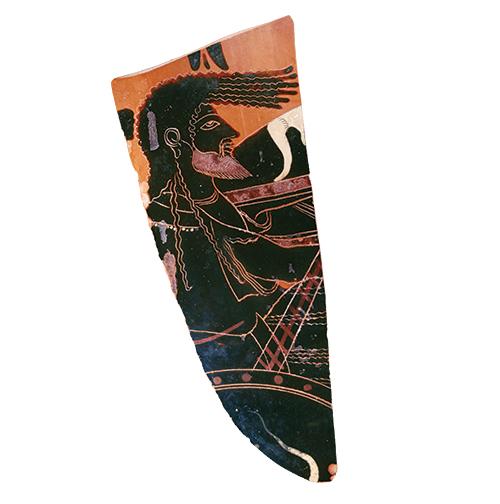
In 2006, Department of Homeland Security agents searched Almagià’s Upper East Side apartment and a storage facility. Immediately, they identified seven antiquities stolen from Italy.
More importantly, they seized a playbook that has allowed them to return far more items.
A trove of evidence collected then, both in New York and in Italy, has formed the “Almagià Archive” and helped law enforcement understand how, and with whom, Almagià did business. Critically for investigators, it includes a ledger labeled the “Green Book” with almost 1,700 entries for looted antiquities.
The Manhattan district attorney’s office says pages filled with Almagià’s neat handwriting show him often grouping the antiquities by tombarolo. The tombaroli have for decades plundered cultural sites in Italy, illegally excavating antiquities and selling them.
In a catalog of the items he dealt, Almagià listed the price he paid and what he got for each object. He often included the name of the buyer and name or initials of the tombarolo.
“Those are his own documents, his record keeping, meticulous record keeping,” Bogdanos says. “It is evidence against him. It’s his looting ledger. He kept a very good record of all pieces that were looted that he bought and paid for, and he had to because he didn’t always sell them right away.”
Almagià says the ledger doesn’t contain information about tombaroli and that the majority of the items listed were sold for less than $5,000. Many, he says, he bought in free ports or from dealers and restorers in Switzerland, London, and Rome.
Rather than masterpieces, Almagià says he dealt small items like those that first captured his interest as a boy. Born in New York to immigrant parents, Almagià grew up in Rome with an interest in archaeology. He came from a family of collectors, going to flea markets on the weekends in Rome and purchasing antiquities. In the 1973 Nassau Herald, Almagià’s bio says he was known to “dig with such zeal as to merit the nickname of ‘mole.’”
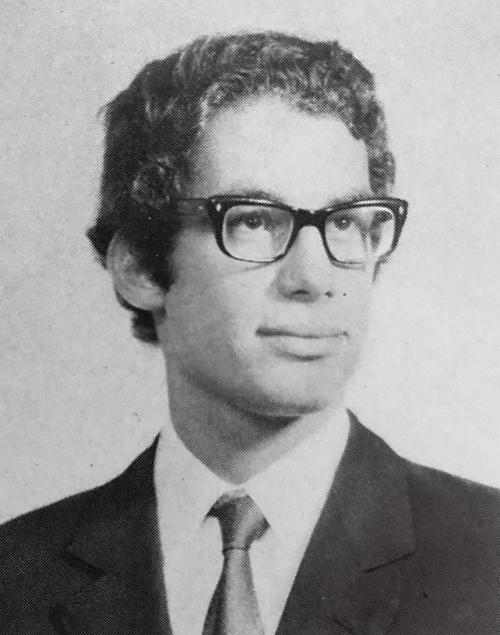
After graduating from Princeton with a history degree, Almagià worked briefly in a U.S. Senate office and for Cirio, an Italian food company. On his website, he opines about various topics, including U.S. and Italian politics, and describes his entry into the art world in the 1980s. Based in New York, he sold antiquities into the early 2000s, attending auctions and parties for the institutions he supported.
Much of what is known and alleged about his activities is detailed in a statement of facts from a 2021 grand jury investigation of Michael Steinhardt, a billionaire hedge fund manager and private collector. Steinhardt was not charged, but the investigation resulted in the seizure of 180 artifacts valued at $70 million. Steinhardt spent $204,000 to buy 10 of those from Almagià.
The statement details Almagià’s interactions with law enforcement several times starting in 1992, sometimes as an informant but more often as the subject of investigation.
In 1996, the U.S. Attorney for the Southern District of New York seized 24 antiquities from a New York gallery that it determined had been looted from Crustumerium, an archaeological site outside of Rome. Almagià sold the antiquities to the gallery months after he paid tombaroli to loot the site following an authorized excavation, the statement says.
Those items were returned to Italy in 1997, starting a decades-long effort to claw back objects that Italian and American law enforcement say Almagià bought from looters, trafficked through Switzerland or England, and imported with false documentation.
In 2000, Almagià was stopped at John F. Kennedy Airport with two stolen Italian frescoes, and six weeks later, law enforcement intercepted a commercial shipment in New Jersey with five Italian antiquities. Both had false documentation, but Almagià was not charged in the United States or Italy “in exchange for providing information to Italian authorities about other tombaroli,” the statement says.
“I have never worked with tombaroli because in order to work with tombaroli, you must be in Italy, you must be on the spot,” Almagià says. “I don’t know a single tombarolo.”
In another interview with PAW, he says, “Tombaroli, they should be protected because they’re a species in extinction. They virtually don’t exist any longer because these people have the idea that you go out in the countryside, you make a hole, and you find the treasure.”
In 2006, Almagià remained on law enforcement’s radar, with the Department of Homeland Security seizing five of his items. Almagià turned over a sixth within days, but he failed to appear to surrender the seventh, instead putting the contents of his apartment and storage unit in a shipping container bound for Naples. Italian authorities seized it, recovering objects, paintings, documents, and Polaroids of other antiquities, the statement says.
Italian officials charged Almagià with receiving stolen goods, the illegal export of stolen goods, and criminal conspiracy to traffic such goods. Those were later dropped because of the statute of limitations, but an Italian court ordered the confiscation of all Almagià antiquities.
Almagià says the shipment contained the contents of his apartment — clothes, furniture, and the like.
While Bogdanos says the “Green Book” is not the only evidence against Almagià, it has been critical in helping recover items from museums and collectors. The archive also includes photos of nearly 1,900 antiquities, invoices, DHL receipts, and envelopes. The district attorney’s office additionally has recovered letters from Almagià to buyers that it says show his awareness of illegal excavations.
Almagià has a diametrically different idea of his work, often meeting questions about the district attorney’s evidence with some variation of, so what? Prone to grandiose asides, Almagià laments what he characterizes as the death of the art market in Italy, compares the investigation to a political witch hunt, and asks why the Americans are the only ones to prosecute this.
Indeed, the DA’s Antiquities Trafficking Unit is unusual. It started as a passion project for Bogdanos, a former Marine colonel who received a National Humanities Medal for recovering antiquities looted from the Iraq National Museum during the start of the U.S. invasion in 2003.
For years after he returned, Bogdanos pursued antiquities in addition to his work prosecuting homicides. In 2017, District Attorney Cyrus Vance Jr. approved the formation of the unit. Its work has resulted in the convictions of 15 people and the return of more than 2,500 objects valued at more than $260 million to 25 different countries of origin.
Almagià, though, does not understand the focus on him. Rather, he casts himself as a collector who dealt to enable his own acquisitions. He recounts Roman inscriptions he kept in the bathroom of his New York apartment or a sarcophagus he bought from a New York gallery that he put plants on and kept in his living room.
“I can understand that these people get mad because it is a national masterpiece, but here we are talking about little things,” Almagià says. “We are certainly not talking about an object that if Italy doesn’t have is a loss to the country.”
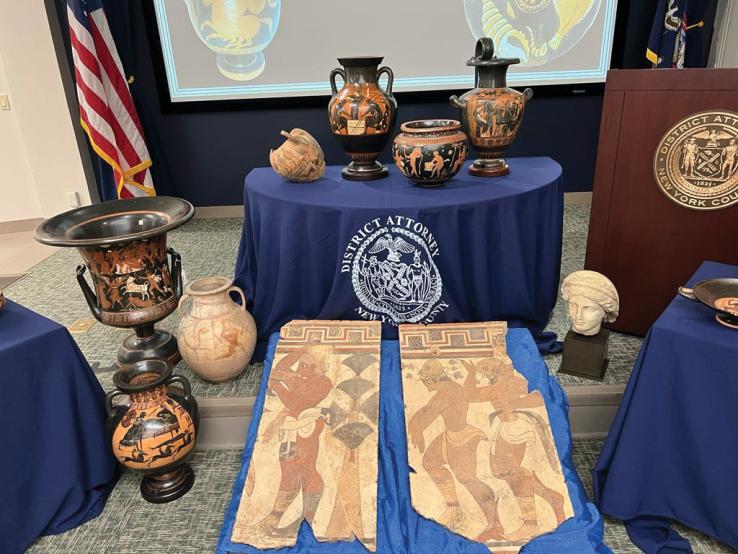
Over the years, many bought from Almagià, often in contradiction to evolving standards in the museum industry.
Six decades after the 1909 Italian law that made antiquities found and excavated there the property of the state, countries began to adopt best practices and new requirements. A UNESCO Convention in 1970 meant to stem the illicit import of art declared that the state parties should take measures to “prevent museums and similar institutions” from acquiring illegally exported cultural property. The United States signed onto it in 1983.
Despite that, the intervening decades have seen numerous scandals involving museums acquiring looted art. Perhaps most famously, the Metropolitan Museum of Art purchased the Euphronios krater for $1 million in 1972.
Almost immediately, the origins of the 2,500-year-old red-figure vessel came into question. Within a year, The New York Times reported that the krater had been looted and that Robert Hecht — a dealer long accused of trafficking looted
art — served as a middleman. Thomas Hoving ’53 *60 was director of the Met at the time, and he took to calling it the “hot pot.”
The Met returned the krater, which was painted by Euphronios in the sixth century B.C., to Italy in 2008.
That same year, the Association of Art Museum Directors strengthened guidelines, advising museums that they should not acquire an object unless they can show it was outside of its country of modern discovery before 1970 or legally exported since then.
“Museums do have an ongoing responsibility. Even if they’re saying, ‘Gee, in the ’70s, ’80s, ’90s, we didn’t pay a lot of attention to this,’ all the more reason that they have an obligation to do it now,” says Patty Gerstenblith, director of the Center for Art, Museum and Cultural Heritage Law at DePaul University.
“This is not a new thing,” she adds. “They were ignoring this because they figured they could get away with it. They were not terribly careful.”
Investigations have borne that out.
In 2005, Marion True, then the antiquities curator of the Getty, was charged in Italy with conspiring to traffic looted art. Giacomo Medici, her co-defendant and one of the most prolific art dealers, was convicted, but the charges against True were dropped.
Returns of objects have accelerated in the years since as museums tried to confront the looted art in their collections.
In 2007, the Princeton museum returned items to Italy that had been trafficked by Medici. In 2010, Italian officials investigated Padgett for the “illegal export and laundering” of objects.
After The New York Times reported that story and the investigation’s ties to Almagià, reporters and scholars identified antiquities from him at several other American museums. In December 2011, the Princeton museum returned six items to Italy. The Met also confirmed returning objects related to the Almagià investigation.
When Almagià objects were identified in their collections, American museums took a variety of responses.
In early 2012, the San Antonio Museum of Art wrote to the Carabinieri — a branch of the Italian military responsible for investigating antiquities crimes — seeking information on its objects from Almagià. Jessica Powers ’97, curator of the ancient Mediterranean collection in San Antonio, says the museum did not receive a response, so it kept the items.
“We don’t wholesale in general offer, propose a restitution of everything handled by dealer X,” she says. “There needs to be some clear evidence pertaining to specific objects.”
The Museum of Fine Arts Boston verified the ownership history of its items — which had no documented provenance — and published information about them on its website in case anyone could make a claim.
The Eskenazi Museum of Art at Indiana University did not answer questions about what steps it took when Almagià objects were first identified years ago but said it “conducts ongoing provenance research for all objects in its collections.”
All three museums had those objects seized since 2021 as part of the current investigation.
The Dallas Museum of Art took a proactive approach, with then-director Maxwell Anderson flying to Rome to meet with the Carabinieri about six Almagià items in its collection. Seeing evidence that they were looted that he called “determinative,” Anderson gave them back.
“I think it’s part and parcel of acting in an ethical way in comportment of professional responsibilities because in no other field do we say that ill-gotten gains are just to be swept aside,” says Anderson.
“There’s a kind of wait-and-see attitude on the part of some directors that perhaps all of this will magically go away if we just wait,” he adds.
At the time of the Italians’ investigation in 2010, the Princeton museum did not say much publicly. Felch continued reporting on the illicit art trade after publishing his book and found the PUAM not responsive to his questions about Almagià objects.
“For an institution dedicated to education, I was disappointed that Princeton refused to answer any questions about the objects they were returning, about their curator, Michael Padgett’s, relationship with Almagià, and other issues that I asked about,” Felch says. “That lack of transparency is problematic, and I think suggests to the general public that the institution is more interested in covering its tracks than it is being open and honest about objects in its collection.”
The Princeton museum’s statement to PAW notes its efforts to publish provenance information for new acquisitions, but it does not do so for its existing collections, which include nearly 115,000 pieces. Though it is the “work not of weeks or of months but of years,” the museum says it will eventually make that information publicly available.
Where Almagià is concerned, it is likely to be brief. The former dealer says he did not ask for provenance information, and Princeton did not ask him for it.
“When you go about buying an oil lamp, you don’t go about asking its provenance,” Almagià says.
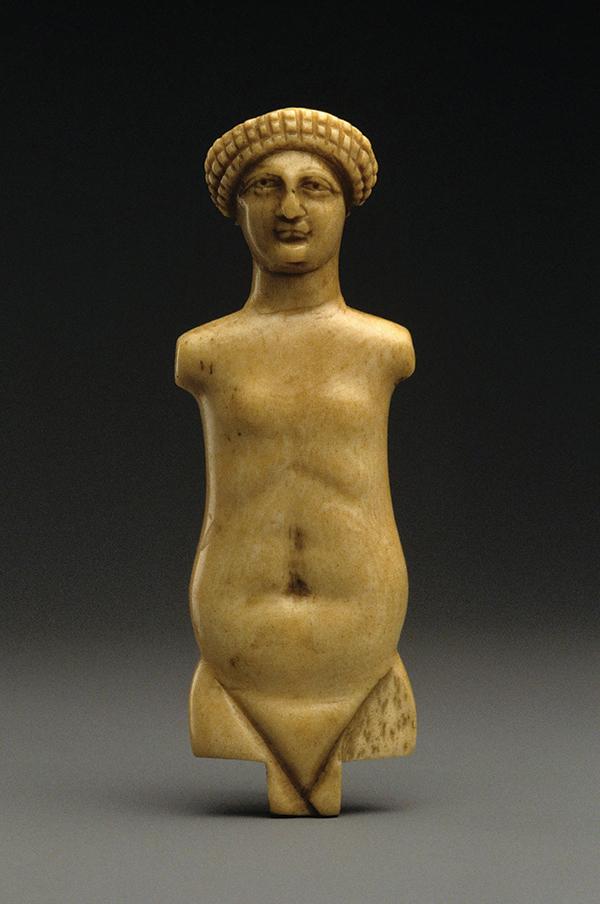
The Princeton museum’s most recent return of Almagià objects came later in a series of seizures that has now spanned three years. By the time the Manhattan district attorney’s office took the six items, it had already recovered Almagià items from seven other museums, including the Cleveland Museum of Art, the Toledo Museum of Art, and the Getty.
As recently as July, the seizures continued. The DA’s office recovered two amphoras, one with Ajax and Achilles pictured playing and another with Priam and Hector’s body, from a private collector. Combined, they were valued at $450,000.
Thus far, the investigation has recovered 216 antiquities dealt by Almagià worth nearly $7 million. In addition to the museums, it has seized objects from 15 private collectors or galleries.
In the Steinhardt statement, the Manhattan district attorney notes an Italian court said Almagià was “contribut[ing] to what was one of the greatest sacks of Italian cultural heritage, based on the sheer amount of stolen goods. … Almagià and his co-conspirators have torn pages from the book of Italian history.”
Beyond the monetary value, experts point to the harm resulting from the illegal excavation and sale of antiquities.
Looting sites destroys evidence that would be helpful in furthering the understanding of ancient cultures. What is in a find spot and where it is placed in relation to other objects can help archaeologists understand information about the date, wealth, or even gender of the person buried there.
David Gill, an honorary professor in the Centre for Heritage at the University of Kent, has followed the Almagià case and others as items have been repatriated. By his count, nearly 900 have been returned to Italy.
“We’re actually seeing the way that we understand the ancient art world being distorted by the looting pattern,” he says.
Those returns include 99 items from the Fordham Museum of Greek, Etruscan and Roman Art. The small teaching museum received those items, representing about one-third of its total collection, from an alumni donor.
“The Museum has committed itself to an important project of both ongoing research and of transparency, through which its established provenance information related to individual works of art will be made publicly accessible via our web-based collections portal. This is the work not of weeks or of months but of years.”
— Princeton University Art Museum
When it was offered the collection in 2006, Fordham checked the provenance but found little beyond the acquisition receipts, says Jennifer Udell, curator of university art. Almost all the seized items came from Almagià.
“The problem is [the donor] was also collecting at a time when standards of provenance were just, sorry, not what they are now,” Udell says.
Many museums facing seizures, including Princeton’s, have worked out agreements with Italian authorities to get long-term loans in exchange for their returns. But without the time and a budget to accommodate shipping and insuring objects on international loan, Fordham lost some of its best teaching objects and had to reconfigure its museum.
It’s for this reason that Almagià asserts that objects he sold are better off in an American museum than in storage in Italy, echoing an argument frequently made within the industry.
“Frankly, whether Italy has one more or one less red-figure Apulian vessel or a black-figure Greek amphora or so on and so forth, it doesn’t make a difference,” Almagià says. “If you go in the warehouses of the museums, they have armies of those and they’re not even exhibited. They are left to rot.”
The ongoing investigation is likely to have continued ramifications, both for Almagià and museums.
Although Almagià believes the statute of limitations has run out to face charges in the United States, Bogdanos says that is wrong.
Instead, the statute has been tolled, or paused, since 2006, when Almagià was expected to turn himself in, Bogdanos says. Citing the ongoing nature of the investigation, Bogdanos would not say whether Almagià would be indicted, but says “all the normal things that happen at the end of a successful criminal investigation are going to happen here.”
For museums, this case — among many others — should be prompting them to review objects they possess, experts say. They have a continuous duty to examine antiquities in their collections, especially when issues with a dealer or collector have been identified.
“Where is the element of deterrence with museums?” asks Yasmine Zahir, barrister at law at Liberty Chambers in Hong Kong. “Time and again, we see them returning the art, but then life goes on until the next time.”
Princeton’s museum has four objects from Almagià still in its collection. Likewise, the Getty has a remaining object from him listed in its collection. More are likely in other private and museum collections, experts say.
With the aid of the “Almagià Archive,” the Manhattan district attorney has a roadmap to continue to track them down. Despite protestations from Almagià that the objects are not important or the argument from museums that industry standards around acquisition and provenance have changed, the investigation continues.
“I am kind of holding my breath,” Udell says. “It’s a little bit of the sword of Damocles. You never know when it’s going to drop.”
Rachel Axon is a freelance reporter based in North Carolina.

